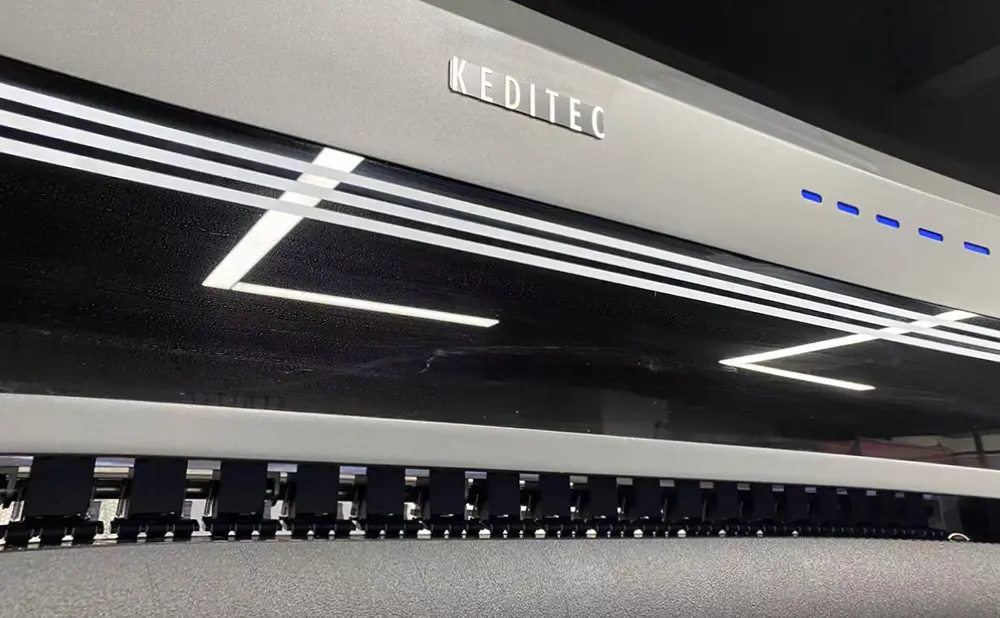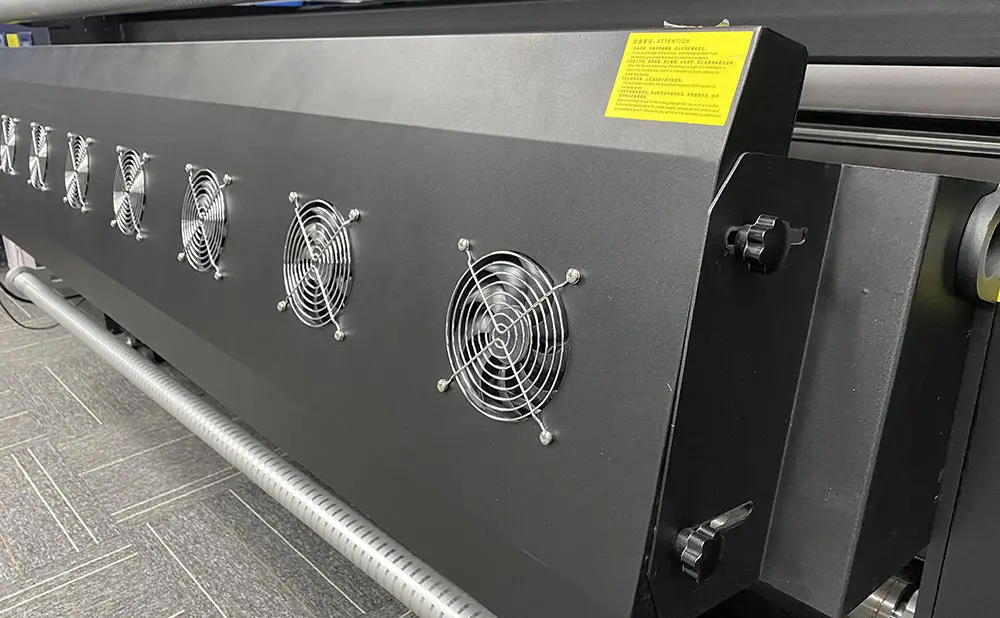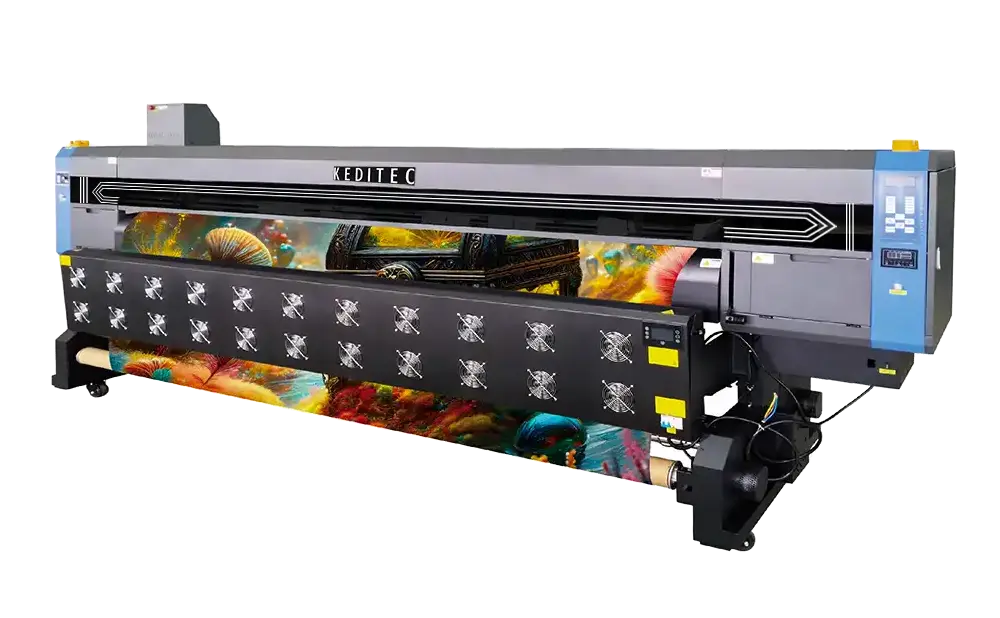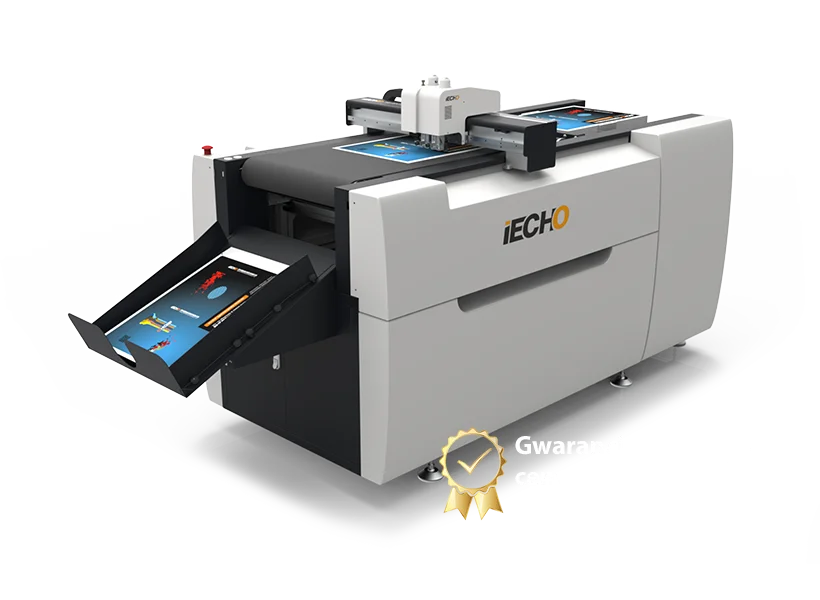What is solvent printing?
Solvent printing is a large-format printing technique that uses inks based on organic solvents. It is one of the most popular types of printing used mainly in the advertising industry for the production of large-format materials. Solvent printing is characterized by high resistance to weather conditions, so prints can be used both indoors and outdoors.
The solvent printing technique uses organic solvent-based inks that penetrate deep into the structure of the material, providing feasible durability and resistance to external factors. Solvent ink, unlike water-based inks, is characterized by high resistance to abrasion, UV radiation and mechanical damage.

How solvent printing technology works
Solvent printing uses a specialized inkjet plotter that applies ink to the substrate using precision print heads. Unlike other printing methods, solvent inks do not solidify on the surface of the material, but penetrate its structure, creating a durable and resistant print.
The solvent printing process consists of the following steps:
- Prepare an image file with the appropriate resolution
- Device calibration and color profile selection
- Applying ink to the selected material
- A drying process during which the solvent evaporates
- Optional lamination for increased durability
Types of solvent printing
Hard solvent printing
Hard solvent printing uses aggressive solvents that provide maximum resistance to outdoor conditions. It is mainly used for production:
- Advertisements on truck tarpaulins
- Durable outdoor banners
- Stickers with increased resistance
Eco-solvent printing (ECO)
ECO solvent printing is a more environmentally friendly version of solvent technology. It uses inks with lower VOC content, which are less toxic to users and the environment. Eco solvent printing is characterized by:
- Reduced emissions of harmful fumes
- A safer printing process
- High quality prints comparable to printing hard
Solvent mild printing
Solvent mild printing is a compromise between hard and eco-solvent printing. It offers good weather resistance while reducing solvent emissions. It is ideal for indoor and short-term outdoor applications.

Application of solvent printing
Solvent printing is widely used in various industries:
Advertising materials
- PVC advertising banners
- Self-adhesive stickers and films
- Posters with increased durability
- Mesh (advertising nets)
- Information boards
Outdoor advertising
Solvent prints are particularly valued in outdoor advertising because of:
- High resistance to weather conditions
- UV resistance
- Color fastness for a long time
- Can be used without additional lamination
Specialty applications
Solvent printing is also used for:
- Markings on vehicles
- Window graphics
- Interior decoration (after proper drying)
- POS elements in the retail industry

Advantages of solvent printing
Solvent technology offers the following benefits:
Exceptional durability
- Weatherproof for up to 5-7 years without lamination
- High abrasion and scratch resistance
- Color stability over time
Material versatility
Solvent printing allows printing of a variety of substrates:
- PVC films with different PVC content
- Mesh and solid banners
- Textiles (to a limited extent)
- Self-adhesive films
Cost effectiveness
- Lower production costs than UV printing
- No need for lamination in many applications
- Good cost coverage with average expenditures
Disadvantages and limitations of solvent printing
Environmental aspects
- Emissions of volatile organic compounds
- The need for ventilation of the printing room
- Characteristic smell during printing and drying
Technical limitations
- Longer drying time than UV printing
- Limited ability to print on solvent-sensitive materials
- Need to degas before use in confined spaces
Comparison with other printing techniques
Solvent printing vs. offset printing
- Solvent printing: flexibility in formats, smaller print runs
- Offset printing: better quality for large print runs, cost-effective
Solvent printing vs. latex printing
- Solvent printing: better external resistance, lower costs
- Latex printing: no emissions, faster drying, safer
Solvent printing vs UV printing
- Solvent printing: lower investment costs, good for standard applications
- UV printing: versatility of substrates, instant curing
Printing technology and print quality
Modern solvent plotters offer:
- Resolution up to 1440 dpi
- Precise color reproduction
- Ability to print in economy or high quality mode
High quality solvent printing is provided by:
- Adequate resolution of the source file
- Professional tuning of color profiles
- Control of environmental conditions during printing
The future of solvent printing
Solvent printing technology is constantly evolving towards:
- Reduce solvent emissions (development of ECO and mild technologies)
- Increase the durability of pigments
- Improvements in occupational safety
- Integration with automated finishing systems
Summary
Solvent printing remains one of the most important large-format printing techniques, especially in the advertising industry. Despite some environmental restrictions, it offers an excellent balance between quality, durability and cost. The choice between different types of solvent printing (hard, ECO, mild) should be tailored to the specific application and project requirements.
For companies looking for a cost-effective solution for producing outdoor advertising materials, solvent printing provides a proven and reliable solution. Combined with a suitable printer and an experienced operator, this technique makes it possible to achieve prints with parameters that meet the highest industry standards.

